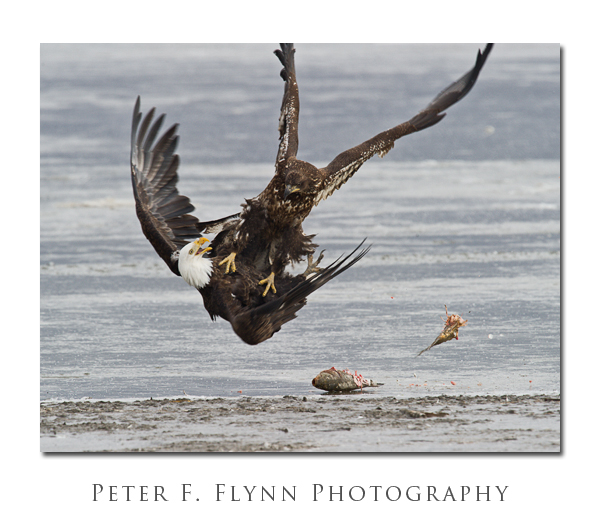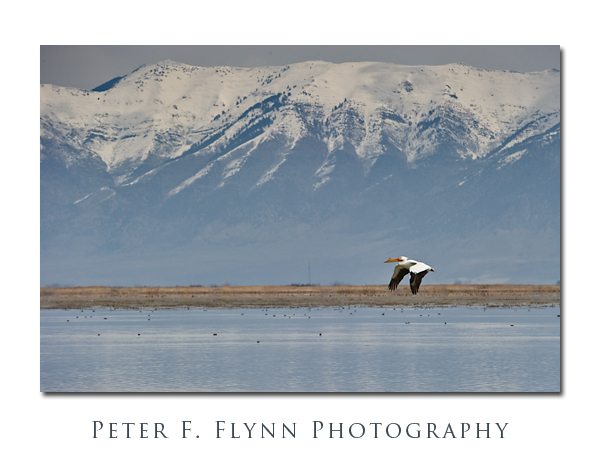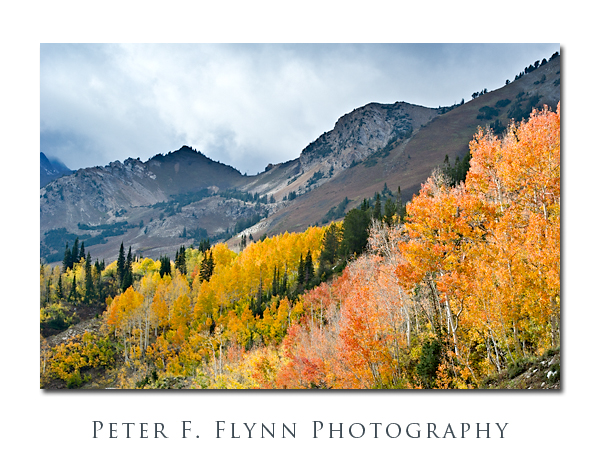
Alta, UT. Poised in a basin formed by Mt. Wolverine to the north, Mt. Tuscarora to the northeast, Mt Sunset on the east and forming a ridge-line southeast to Sugarloaf Mountain on the southern edge, Albion Basin is a legendary hiking/skiing area. The basin lies at road’s end, UT State Route 210, aka, East Little Cottonwood Canyon Road, just beyond the town of Alta, UT. Beyond the hiking/skiing fame, the area is most famous for the riot of wildflowers that blooms in the spring. The elevation of Alta is just a titch low of 9K ft, which places the basin at plus a couple of hundred ft above 9K. Although there are not a great many trees growing altogether, the leaves on those that are here are in their prime fall splendor. Brilliant Yellow, orange, and red, cast against the green of the pines, the gray granite, and the dark earth.
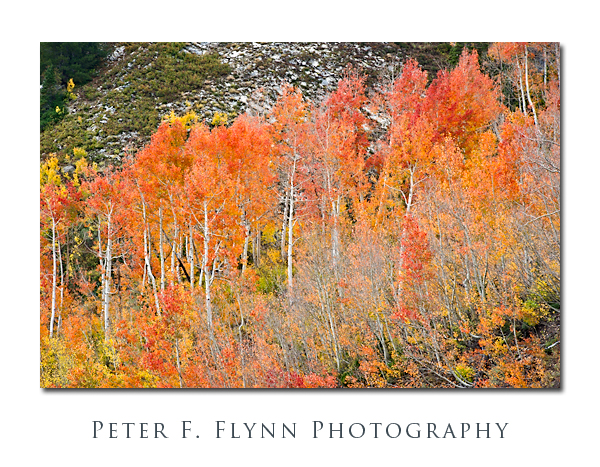 The images above were at about 13:40 MDT on Saturday, October 9, 2010, using the Nikon D3s, and the AF-S NIKKOR 70-200mm f/2.8G ED VR II lens. The top image was recorded at 70mm, with an exposure of f/11 and 1/1000s (to freeze the leaf movement), ISO at 1000. The lower image was recorded at 200mm, with an exposure of f/13 and 1/200s (+0.33 EV, normalized in the RAW conversion), ISO at 1000.
The images above were at about 13:40 MDT on Saturday, October 9, 2010, using the Nikon D3s, and the AF-S NIKKOR 70-200mm f/2.8G ED VR II lens. The top image was recorded at 70mm, with an exposure of f/11 and 1/1000s (to freeze the leaf movement), ISO at 1000. The lower image was recorded at 200mm, with an exposure of f/13 and 1/200s (+0.33 EV, normalized in the RAW conversion), ISO at 1000.
A few words about the ‘new’ NIKKOR 70-200mm lens. As good as the previous version is, and let’s be fair; it is really a fantastic piece of glass, in spite of the overemphasis on corner sharpness, the new version is a game replacement. The optics are frankly a wash for virtually all circumstances, but for me personally the way the lens feels in-the-hand and responds have been significantly improved.
To set up for the leaf shots I (randomly) parked in front of a large bush. Just casually looking forward I noticed a lovely smallish greenish bird keeping an eye on me. Very photogenic thinks me, and I race around to the back of the car to mount up the AF-S VR Zoom-NIKKOR 200-400mm f/4G IF-ED lens. These little fellows dodged in and out and all-around this big bush. I was able to make to a few decent images of these guys during the split-seconds that they stopped moving – a great challenge and big fun. I wasn’t able to capture an image that shows the ruby crown, but I was able to see it for small fractions of seconds as the birds fluttered around.
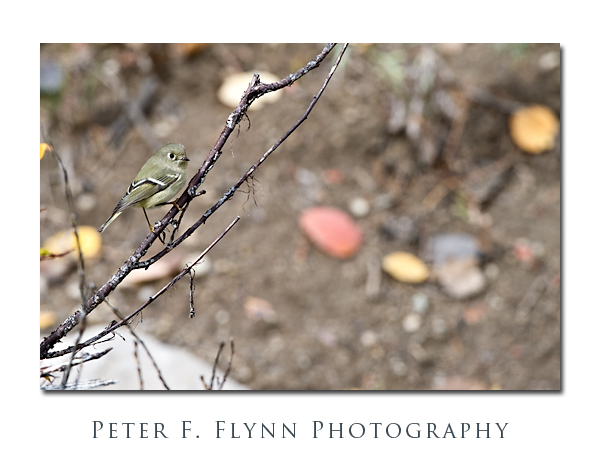
Images of Ruby-Crowned Kinglets, Regulus calendula, were recorded on October 9, 2010, at 15:20 MDT, using the D3s and the 200-400mm f/4 lens. Exposure was around f/8 and 1/800s, ISO at 1000. Thanks to Jack Skalicky and Joe Dumais for helping me get an ID on these birds.
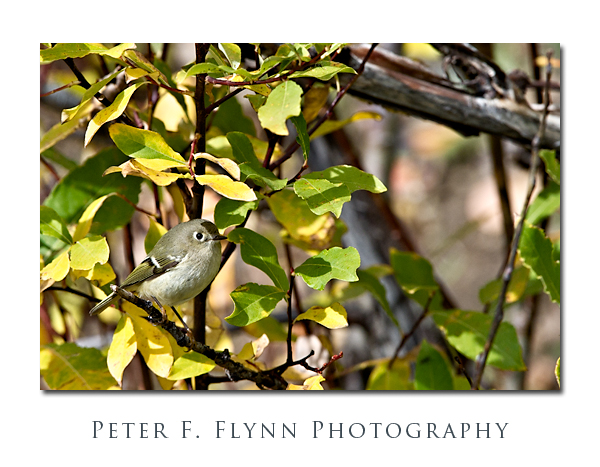
Copyright 2010 Peter F. Flynn. No usage permitted without prior written consent. All rights reserved.
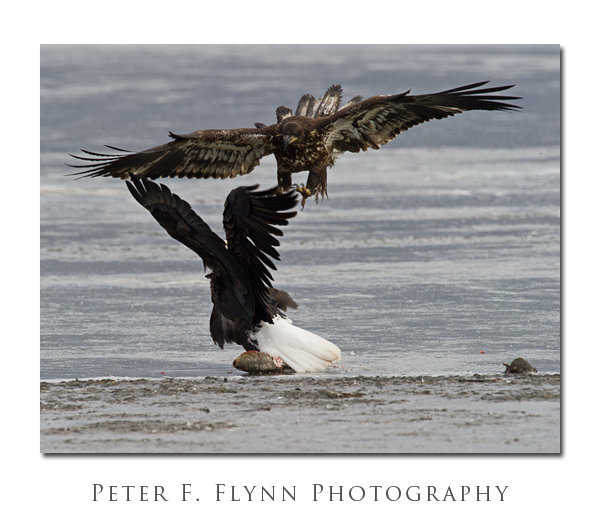 Each year, between late January and early February, rangers at Farmington Bay Waterfowl Management Area (FBWMA) conduct a carp cull. The cull is designed to reduce the impact of carp, which are a nonnative species (not even native to the western hemisphere, BTW). Rather than cart off the dead fish, the ranger leave them lying about. It is not long before large numbers of Bald Eagles, (Haliaeetus leucocephalus) are drawn to the area to feast on the abundant carrion.
Each year, between late January and early February, rangers at Farmington Bay Waterfowl Management Area (FBWMA) conduct a carp cull. The cull is designed to reduce the impact of carp, which are a nonnative species (not even native to the western hemisphere, BTW). Rather than cart off the dead fish, the ranger leave them lying about. It is not long before large numbers of Bald Eagles, (Haliaeetus leucocephalus) are drawn to the area to feast on the abundant carrion.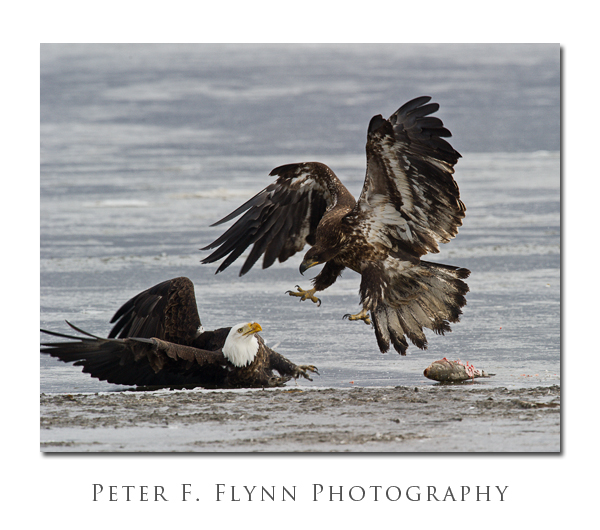 On this visit, the eagles were concentrated along the Dike Road, near coordinates 40° 56’41.70″N, 111° 56’14.74″W. There were about a dozen people viewing.
On this visit, the eagles were concentrated along the Dike Road, near coordinates 40° 56’41.70″N, 111° 56’14.74″W. There were about a dozen people viewing.